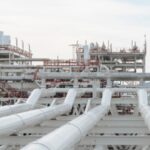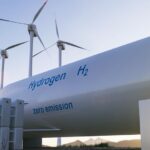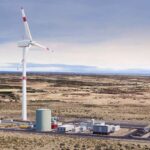Ammonia is largely impacted by the price surge. In Europe, the sharp rise in gas prices has been observed since mid-2021. However, the war in Ukraine exacerbates it. In sum, in 2022, prices are between 3 and 4 times higher than compared to the levels observed between 2016 and 2022.
In addition, the global supply of ammonia is disrupted. Russian and Ukrainian ammonia exports from the Black Sea have been halted following the Russian invasion. Before the war, Russia and Ukraine had a combined market share of about 20%.
Since the Russian invasion, the ammonia market has been in trouble. Many producers are being forced to reduce their operating rates, if not close their facilities. As a result, European demand for ammonia is exploding. To ensure its supply, the old continent turns to a multitude of nations, scattered around the world.
Ammonia, a pillar of the energy transition?
Historically, ammonia has been used in fertilizers. It supports nearly 90% of the world’s agriculture. In addition, it is used in certain chemicals such as caprolactam (raw material for nylon) or in explosives used in mines.
A central element of the hydrogen subsidiary
However, ammonia is also essential to the energy transition. Thus, its demand is expected to increase significantly in the coming years. In fact, it is used in the hydrogen sector. Its chemical composition makes it an ideal candidate for the development of this subsidiary. The ammonia molecule is composed of one nitrogen atom and 3 hydrogen atoms.
Moreover, it is easy to transport. However, this is not the case with liquefied hydrogen. The sector is still in its infancy. Thus, it would be a long time before a viable and operational activity on a global scale would emerge. In fact, liquefied hydrogen must be kept at a temperature of -253°C, compared to -33°C for ammonia.
Thus, ammonia could be used as a fuel. Thus, if it is produced from renewable hydrogen, it would meet the various climate objectives. In fact, ammonia does not release carbon when used as a fuel.
Increasingly important investments
According to some analyses, ammonia should be the focus of investments. Massive investments are already underway and others are planned. Thus, the sector is expected to undergo an upheaval in the years to come. Global demand for ammonia is therefore expected to soar.
Today, the volumes are much too low to be able to measure them. However, demand from the power and bunker fuel sector will see its share of total demand increase to 4% in 2030 and 29% in 2050.
Asia is expected to be the largest consumer of ammonia. The continent seems to be banking on the latter as a fuel to support its energy transition. This is particularly the case in Japan. METI estimates that Japanese demand will be 3 million tons per year in 2030 and 30 million tons per year in 2050.
Increased interest
This interest in ammonia is symbolized by Platts, which on April 22 launched daily price assessments and premiums for blue ammonia. This one is low carbon. If it is produced from gas, CO2 emissions are limited by CCS. According to S&P Global, it is possible to talk about blue ammonia if 90% of the emissions are captured.
With the ammonia sector gaining momentum, S&P Global is introducing 24-month global Platts ammonia futures curves.











